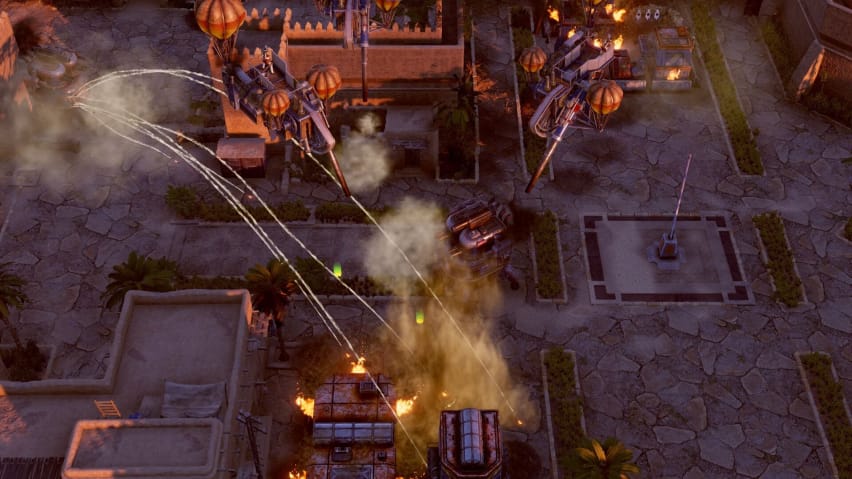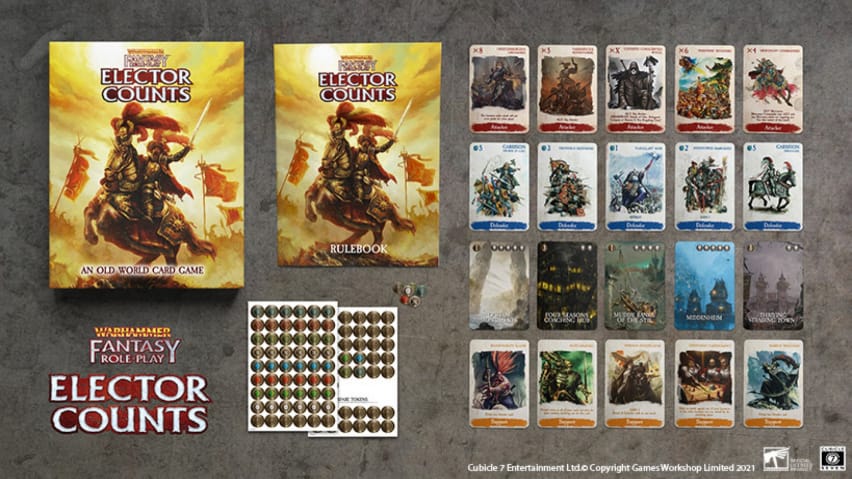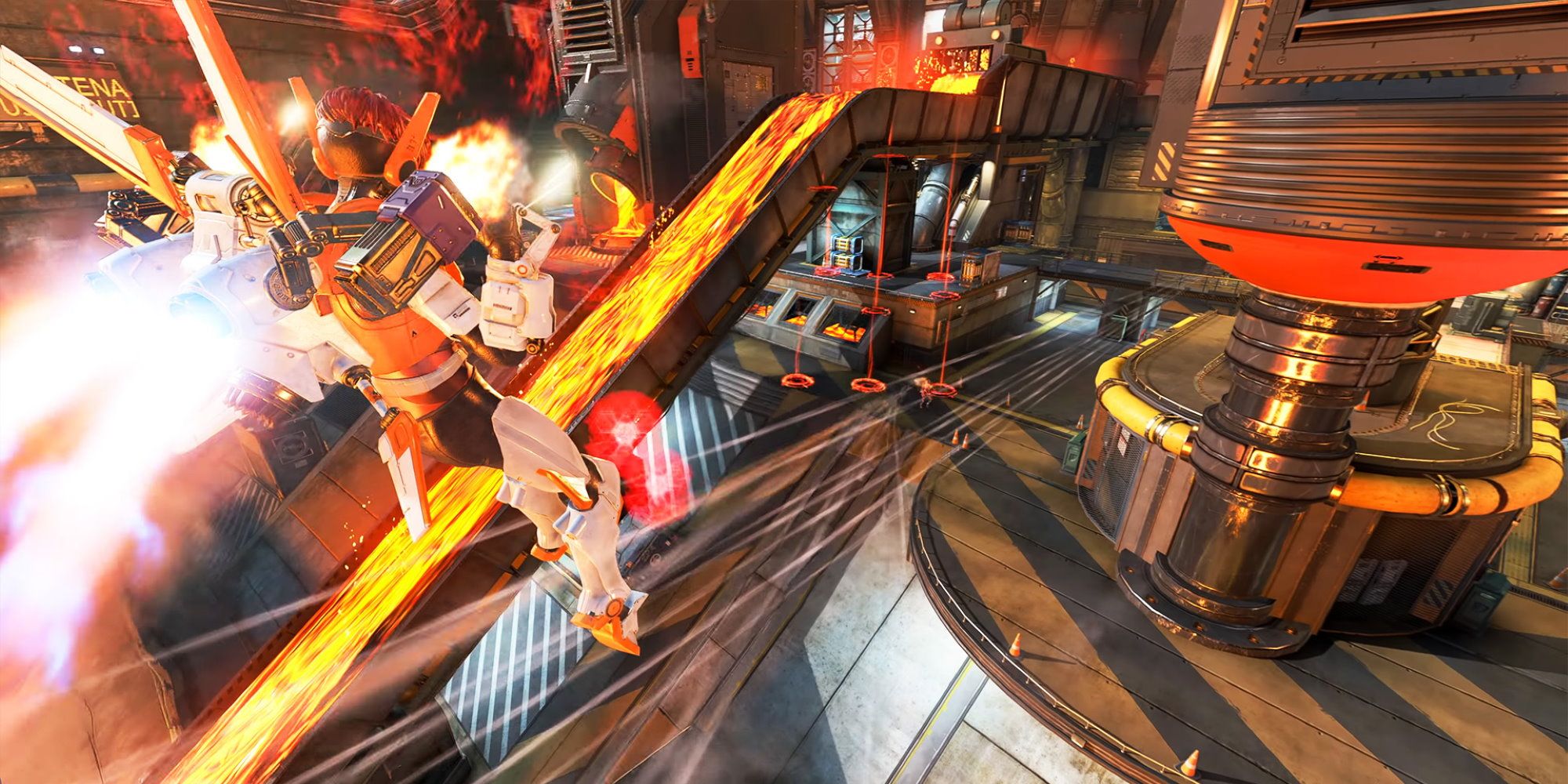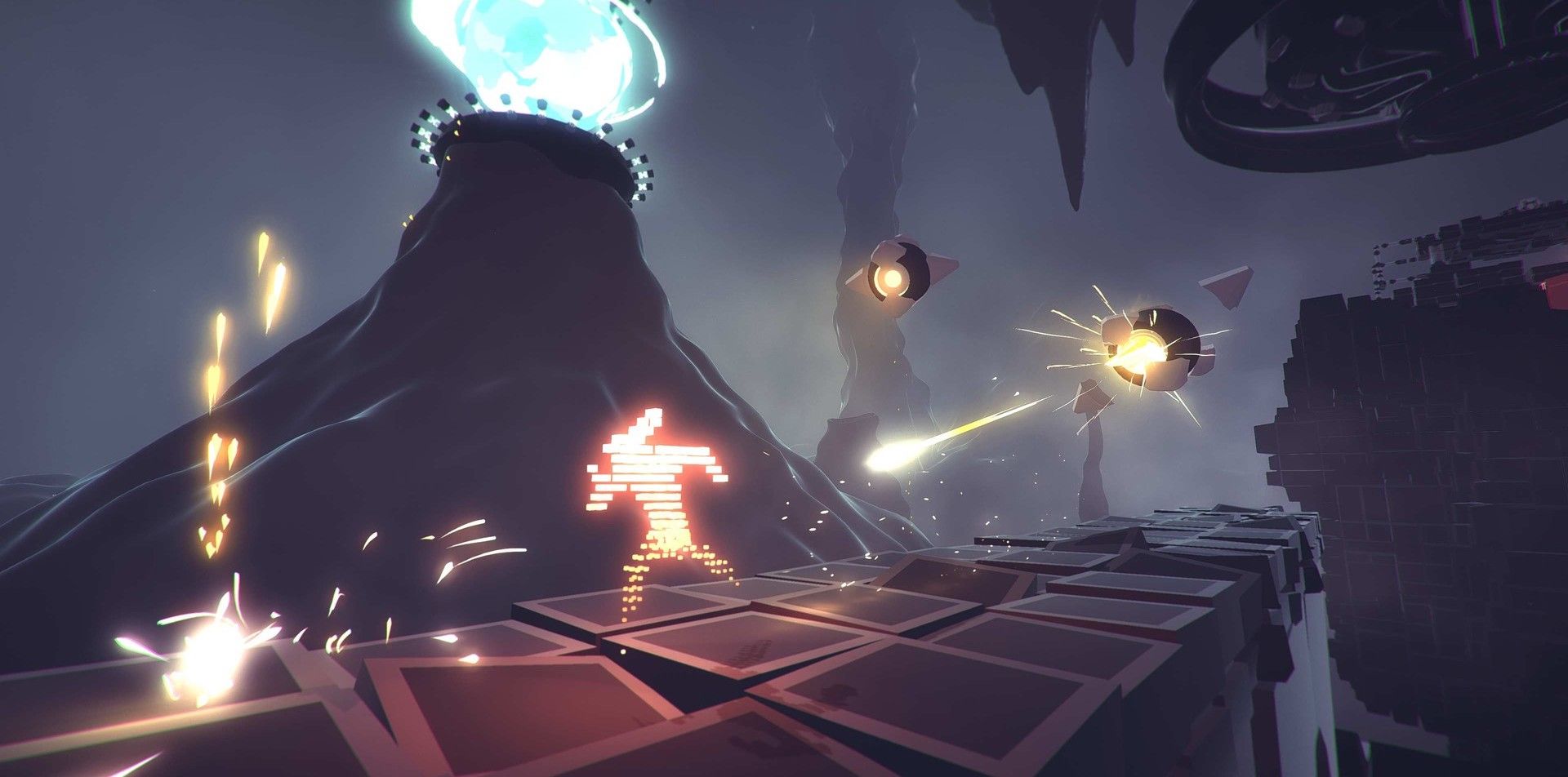
There is something about Recompile that might not be apparent when watching trailers, and that's how Phigames uses Plato's philosophy as a source of inspiration. Phi Dinh talks with Game Rant about the Platonic solids and the recurring 'theme of five,' which is also derived from Plato's theory about the five solids and elements from which the world and universe are made of. The five solids each have a corresponding element: the tetrahedron is associated with fire, the hexahedron is associated with the earth, the octahedron is associated with air, the icosahedron is associated with water, and the dodecahedron is associated with ether and the universe.
Dinh talks about how the different biomes and enemy types are linked to this logic, and shapes in the game can be traced back to Platonic solids. In fact, Recompile features five different biomes and enemy types, which are all paired in the same way as Plato's solids and elements. What happens is that each biome is characterized by the enemy type that lives within it, and in a broad sense each possible ending depends on how much players explore a single biome to find the collectible items it hides.
RELATED: 3 New Games Added to Xbox Game Pass, Including 2 Day One Titles
Plato's Philosophy and the 'Theme of Five' in Recompile
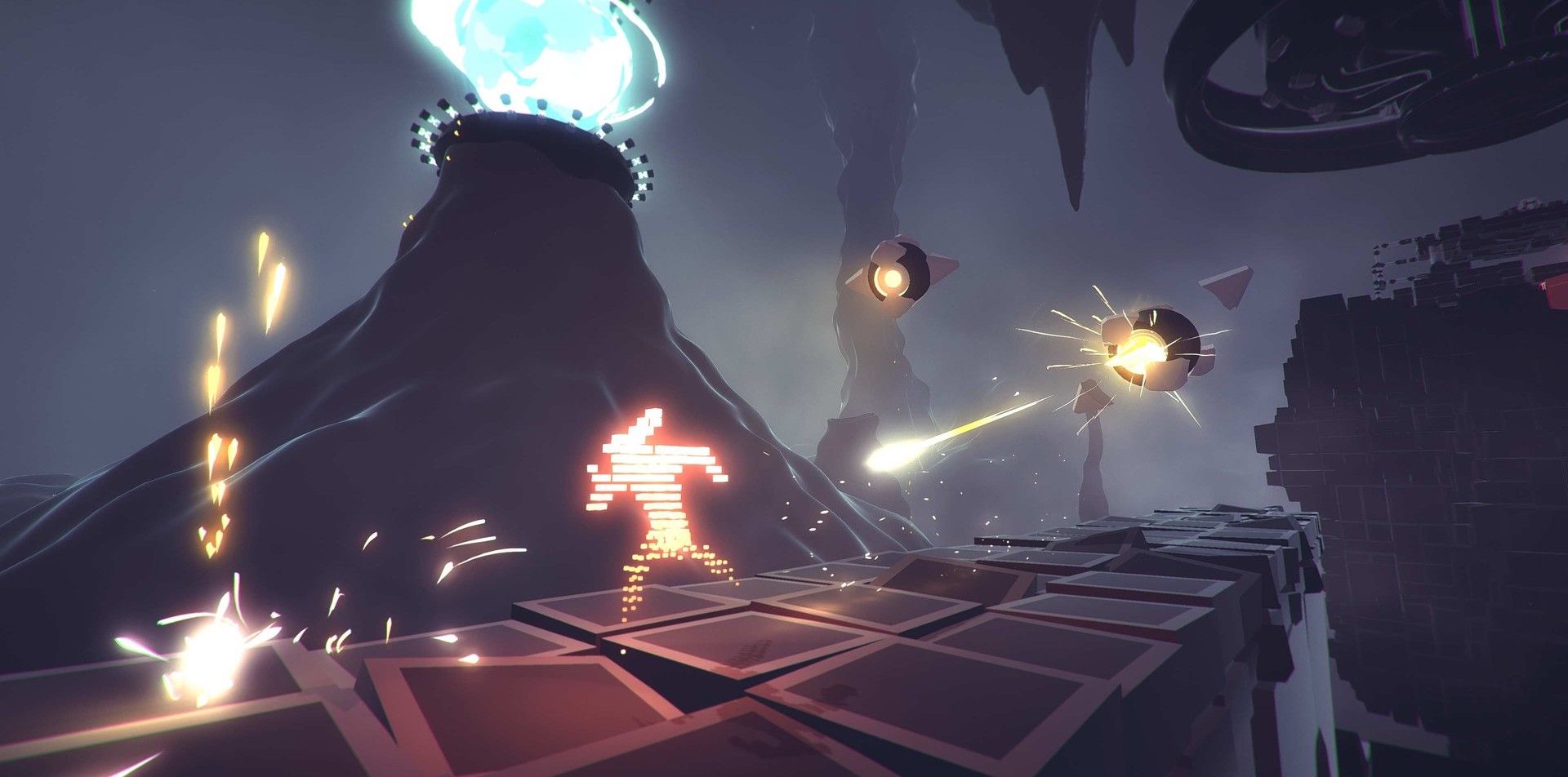
The collectibles that players can find in Recompile are called 'memories,' and they tell bits of the story regarding how the mainframe came to be. Because Recompile is a game where the hero of the story is a virus inside a computer, Plato's influence can be used as a springboard for all that this new metroidvania-inspired title has to offer.
Basically, how you play the game and what mechanics you use open different areas, so that you collect different types of memories, and at the end of the game these memories are combined together to create your personalized ending.
The theme of five is something that is at the very core of Recompile, and it acts as the glue that keeps everything together precisely because of how each aspect of the game is so intrinsically linked to the others. Dinh uses an example from the game's story to describe this, as the tetrahedron enemies have grown past their programming and want to take over the other biomes as well – which is connected with their element fire and traits typically associated with it. The shapes that make all the enemies in the game are bound to feel familiar because of how many other games use Plato's solids to create animated beings of all kinds, from Portal's Companion Cube to Destiny 2's Ghosts.
Everything is kind of familiar. The tetrahedron enemy is like a four-sided pyramid. That's used in a lot of imagery. The icosahedron is very much like a sphere, so it lends itself to whirling around and jumping about. Using the Platonic solids gave us a nice tool set to develop the game and its visual identity.
Furthermore, Recompile's bosses are not simply bigger versions of a specific enemy type associated with the boss' lair and biome, but rather they are modular in the sense that each part of them is made by creatures stacking together. Dinh talks about one of Recompile's bosses for the biome inhabited by the hexahedron, as it looks a lot like a Rubik's Cube made of a plethora of smaller hexahedrons.
Overall, what makes Recompile so different from other games is that it toys with Plato's metaphysics on many levels. Yet, Recompile becomes itself a place for Phigames to tell a meaningful story that poses existential questions about the future of humanity and artificial intelligences, coming full circle with the works of a philosopher from thousands of years ago.
Recompile is available now on PC, PS5, and Xbox Series X/S.
MORE: Destiny 2's Season of the Lost Confirms Leaks and Includes Scorn Champions
